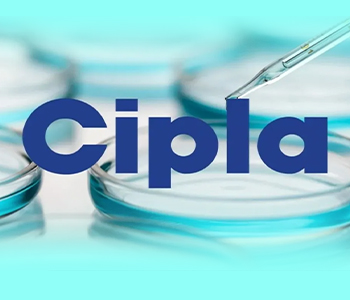Samrat Pradhan, Managing Editor, India Pharma Outlook

According to IBEF, India’s pharmaceutical market is showcasing tremendous growth prospects with a projection of touching USD 450 billion by 2047. With this trajectory, players to expand its reach, they must partner with a competent Pharma Branding Agency to drive better visiblity and always be at par with digital trends, global regulations, and patient behavior.
Dilip Shanghvi, Founder & Managing Director, Sun Pharmaceutical Industries stated, “India has emerged as the ‘pharmacy of the world,’ supplying high-quality, cost-effective medicines to over 200 countries... India has the potential to become a global hub for life-sciences innovation.”
Irrespective of industry verticals, storytelling is as important as the credibility of a given product or service. Hence, players in the pharma industry are slowly but understandably realizing the importance of branding. However, it is equally important to partner with a competent branding agency who comes with a proven track record to help expand a company's wings. Having said that, if we look at the Indian pharma branding agency market, agencies are today under grave pressure to deliver more than just visibility and are expected to go above and beyond to facilitate trust, compliance, and connection.
Umang Vohra, Managing Director & CEO, Cipla India has interestingly stated, “If you have big brands, it is difficult to substitute them in India… A lot of pharma companies have realised this and everyone is in this mission of trying to make their brands more salient, bigger. If the brands are strong, no matter what distribution format you have, then you have pricing power.”
Now let’s delve in and explore the importance of rebranding pharmaceutical companies in today’s competitive landscape.
Also Read: How Robotic Assisted Surgery Is Redefining Precision in Kidney Transplants
.jpeg)
Today, we are at an intersection where lines are significantly blurring between healthcare and consumer expectations. Looking at this trajectory, pharma companies must shift their focus from a mere information dissemination to a comprehensive experience creation.
For instance, leading Indian pharma branding agencies should leverage design thinking and emotional intelligence to create human-centered storytelling, today. Because it is all about how you place your story in today’s competitive market.
“Branding in pharma must evolve from promotional noise to purposeful communication. It’s not what you make, but how you position it in the minds of doctors, regulators, and patients.” - Pankaj Patel, Chairman, Zydus Lifesciences.
According to Designer People, core strategies here include:
1. Utilizing color psychology to convey safety, calm, and trust
2. Devising modern visual identity systems that reinforce brand recall
3. Steering packaging innovation that’s intuitive and empathy-driven
These aforementioned parameters underline one of the most critical pharmaceutical branding trends of the decade. The branding for Indian Pharma has been witnessing a shift from being purely scientific to becoming emotionally resonant. So, what is the end goal? The answer here would be stronger patient engagement strategies that improve outcomes and loyalty.
Also Read: Fetal Imaging to Cardiac Diagnosis: The Expanding Role of Ultrasound
.jpeg)
The opportunity for brand differentiation has never been greater. A company’s growth is always parallel with quality and visibility standards. Even if you manufacture optimal quality products, without awareness among the customers, it is valueless.
While demand for generic drug exports, increasing lifestyle diseases, expansion into rural healthcare, rise of wellness-focused consumers are bolstering Indian pharma market, a sweat branding module can layer this growth more seamlessly. This is especially true, given India’s cut-throat market.
With this heightened competition, pharma marketing in India must evolve as pharma companies are inclining to specialized branding agencies for long-term brand equity building, compliance-focused storytelling, and omnichannel engagement.
While there are opportunities, the journey for Pharma Branding agencies will always be complex. As highlighted by Pharma Marketing, agencies and marketers must grapple with:
1. Post-pandemic digital fatigue
2. AI-driven engagement overload
3. Fragmented communication channels
4. Stringent pharma advertising regulations in India
We have also noticed that compliance and pharma marketing must go hand in hand in 2025 - messaging must align with India’s regulatory frameworks, which place limits on direct-to-consumer outreach. Thus, pharma digital marketing trends are noticeably shifting towards education-based branding, KOL (Key Opinion Leader) partnerships, and HCP (Healthcare Professional) interactions.
“In 2025 and beyond, pharma marketing will be more about education, empowerment, and ethical engagement than just product awareness.” - Meenakshi Nevatia, MD, Pfizer India.
.jpg)
There is no doubt that India’s global influence is growing rapidly backed by Government’s promising initiatives like the Production-Linked Incentive (PLI) Scheme and Scheme for Promotion of Bulk Drug Parks. These steps have greatly elevated pharma manufacturing capacity.
Furthemore, this surge means that pharma agencies in India must now craft globally appealing, regulation-compliant, and culturally sensitive brand strategies that resonate across markets like the U.S., Europe, and Africa. Pharma export policies are not just trade issues—they’re brand challenges. Every exported drug must carry with it the brand reputation of trust, quality, and integrity.
Also Read: 10 Pharma Sector Revolutions in India
.jpeg)
There are always some legal boundaries. And same is with the pharma industry. And unlike Western markets, India strictly prohibits direct-to-consumer (DTC) advertising for prescription drugs.
As explained by Rödl & Partner, all marketing efforts must comply with the Uniform Code of Pharmaceuticals Marketing Practices (UCPMP).
Some of the key compliance mandates include:
1. No public advertising for Schedule H drugs
2. Ethical engagement with HCPs
3. Mandatory documentation for sample distribution
This aforementioned legal framework necessitates that every Indian pharma branding agency should be well-versed in pharma advertising regulations in India. Because, success lies not just in creativity but in legally safe, compliance-first pharma marketing.
.jpeg)
By 2030, the pharmaceutical landscape is expected to look drastically different. As reported by Amrop, companies are investing in AI-skilled marketers, CX (customer experience) experts, and digital storytellers.
This new wave of talent has been tremendously aiding to shift pharma from product-push to purpose-driven communication. Furthermore, future-ready pharma branding agencies in India have already started crafting brand blueprints that shed light on patient empowerment, preventive care, and wellness journeys.
As Indian pharma expands globally, the narrative must be led by consistent quality, strong digital branding, and local market empathy.” - Satish Reddy, Chairman, Dr. Reddy’s Laboratories.
Here are some of the aspects that you can expect with respect to what lies in the future of pharma digital marketing trends:

To understand further, let’s uncover a promising case study of Cipla’s ‘Berok Zindagi’ Campaign – A New Age in Pharma Branding
As we all know, Cipla, which is one of India’s most trustworthy names in the realm of pharmaceuticals. Let’s speak of its iconic campaign that was launched titled ‘Berok Zindagi’ (Fearless Life). This initiative came with a marketing aim to create awareness around asthma and reduce the stigma associated with inhaler use in India.
Here are some noteworthy aspects this campaign brought to the table:
Emotional Storytelling: The campaign broke itself away from traditional scientific messaging and instead utilized emotional storytelling wherein the campaign showcased real-life situations where people could reclaim their lives with the help of proper asthma management.
Multi-Platform Approach: Cipla meticulously leveraged the reach of TV ads, digital media, influencer partnerships, and on-ground activation to create a 360-degree impact.
Celebrity Endorsement: The brand also brought in public figures with the likes of Radhika Apte and film director Neeraj Ghaywan to communicate authenticity and relatability.
Educational Focus: Instead of a direct product push, Cipla focused its lens on disseminating knowledge about asthma care and normalizing the use of inhalers. This was a classic example of a robust compliance-first, education-driven branding.
Multilingual, Multi-regional Targeting: The campaign was further personalized and localized to reach different Indian states in regional languages, showcasing design thinking and empathy.
Awareness Spike: According to reports, inhaler acceptance among patients rose significantly in urban centers.
Brand Recall: Cipla became the #1 associated brand for asthma treatment in India.
Industry Recognition: The campaign won accolades at the Effie Awards and India Health & Wellness Summit.
Also Read: The Future of Genomic Sequencing: Trends That Will Define the Next Decade
So to conclude, there is no doubt that India has robustly positioned itself as a global pharma leader. However, the role of a strategic Indian pharma branding agency cannot be underpinned. Because, it is said that agencies are not just storytellers—they’re compliance custodians, technology enablers, and patient advocates.
So, whether navigating pharma export policies, crafting patient engagement strategies, or aligning with pharma advertising regulations in India, one thing is quite certain: the future of pharmaceutical branding in India is holistic, digital-first, and human-centric. So the both fronts - companies and agencies alike - must lead, innovate, and reimagine its business modules.
While innovative branding strategies are important. But far more important would be to ensure optimal quality standards. “A well-branded molecule today speaks volumes not just about the science but about the soul of the company—how it cares, engages, and evolves.” - Pratibha Pilgaonkar, VP – Marketing, Glenmark Pharmaceuticals.
Some of the latest trends that will steer the market include omnichannel marketing, emotional branding, regulatory-first storytelling, and digital asset optimization.
No. Direct-to-consumer (DTC) advertising for prescription medications is prohibited in India. All marketing must target healthcare professionals and comply with UCPMP.
The players in the industry have started integrating advanced AI tools, building compliance-centric creative teams, and aligning brand strategies with global best practices, government policies, and emerging technologies.